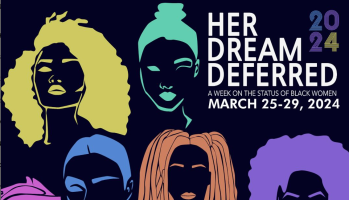RELATED: Parents Support Their 5-Year-Old Boy Wearing Dresses & Jewelry [VIDEO]
A little boy in a bright red dress and his mom’s picture book about acceptance are front and center in a biting debate over a question well beyond his years: Are society’s gender roles so rigid that a male child can’t have fun in a tutu? Cheryl Kilodavis self-published “My Princess Boy” over the summer about the sometimes cruel reaction 5-year-old Dyson faces when he wears sparkly frocks, twirly skirts and jewelry. She shared it with his school and hopes it will be used as a tool for teachers, day care centers, summer camps and afterschool programs to address bullying and promote tolerance.
What the Seattle mom hadn’t anticipated was that her family’s appearance on local TV – with a sullen Dyson in red dress and sparkly pink socks – would land on YouTube, light up Twitter and produce packs of snappish doubters along with loving support from around the world. “It’s been, you know, the dialogue is happening, which is the goal,” Kilodavis said.
Much of the positive reaction has come from educators, parents of like-minded boys and members of the gay community. Much of the negative seems centered on the video of Dyson as he sits sullenly next to his mom on a talk show couch, flipping through the book and sniffing from a cold while he listens in on the grown-up conversation.
“I like to dress up in different kinds of clothes and jewelry,” the boy offers on KING5-TV’s “New Day Northwest.” The host asks: “‘Cause it’s fun?” “Mm h’mm,” Dyson responds. Some wonder whether his parents’ indulgence has led them into dangerous territory, and whether putting him on TV to sell books, no matter how valuable to others, was a wise thing to do.
“The parents shouldn’t let the kid do it just because he wants to,” said Alajauan Adams, 27, a youth coordinator for a nonprofit organization in Washington, D.C. “I’m not here to judge if it’s right or wrong for him to be an outcast, but the reality is he’s going to be and you’re not protecting him from it.”
Online radio blogger Lashaun Turner, the 46-year-old mother of three grown children (including two boys) in Riverside, Calif., was taken aback by Kilodavis tracing Dyson’s fashion sense to age 2. “I mean it’s just crazy. Your 2-year-old is picking out pink colors and wanting to wear pink dresses and so therefore you start buying him dresses? I mean a 2-year-old has not a clue as to whether they’re boy, girl, fruit, vegetable or a rock.”
Kilodavis acknowledges her initial discomfort when her youngest son’s “unique eye for everything beautiful,” especially things pink and glam, surfaced at a tender age at home, and a few months later more publicly when he ran into her arms at day care pickup one afternoon dressed in a red sequin dress and pink high heels. “He was so happy. He said ‘Look how pretty this dress is,'” she said. “I was worried about if the other parents were looking at him, and were they looking at me.”
The parents had Dyson evaluated by a medical team that included a psychologist because, Kilodavis said, “Everything out there is always about gender identity confusion, and I wanted to make sure my child was happy with who he was.” The verdict? He is. He just enjoys tiaras and ballet leotards, but also basketball and climbing trees – all interests that tomboy girls delight in routinely without an eyelash batted.
Kilodavis did try diverting Dyson’s attention as a toddler by providing his day care with a little more flash for boys in the dress-up area. She brought in a red-and-gold karate outfit and a band uniform, but they were no-gos for Dyson. “The next day when I went to pick him up he was in a yellow dress,” she said.
Forward to age 4, when Dyson and his 8-year-old brother went shopping with mom for Halloween costumes. Older brother settled on a ninja turtle. Dyson begged for Cinderella. The worried mom made the purchase and made sure his private school was aware of his costume choice. In solidarity, three “stereotypically macho men” who work at the school dressed up as ballerinas, but Dyson wasn’t there to enjoy a little dance they put on in his honor, or the annual holiday parade.
His mother couldn’t bear to send him, afraid it would be too much. Dyson did go trick-or-treating in his Cinderella gear. “Somebody laughed at him, a lady at a house. She said, ‘Oh my gosh I can’t believe you’re dressed up as a girl. You’re a gender bender.’ He asked, ‘Why did she laugh at me, mommy?'” Kilodavis said. “People would make comments at stores, like ‘Are you really going to get that Tinkerbell outfit?'” That’s when she got busy on the book.
Requests for it have skyrocketed since Dyson’s story hit the Web. The family is now in search of a publisher. “People are walking into stores looking for the book. They’re e-mailing me, saying I wish you were my mom when I was a princess boy growing up.” Wendy Rosen in suburban London bought the book for her own princess boy, 8-year-old Cameron, and reached out to Kilodavis on the book’s Facebook page. By telephone, she said Cameron accessorizes his school uniform with ladies’ pins and a sparkly Hannah Montana bookbag.
“The book really hit a button for us,” said the legal secretary. “I think it’s the only time he’s seen a boy dressed as a girl.” How does Cameron handle teasing? “I just ignore them,” he said. “It doesn’t bother me much. I really, really like to wear glittery stuff.” The book doesn’t mention Dyson by name. It doesn’t give the princess boy a face to reinforce its message of inclusion, but Kilodavis used real life to tell the story and urge tolerance. “I’m still going through the process, too. This is a journey,” she said. “I’m not professing to know all the answers. I have the heart of my little boy in my hands.”












